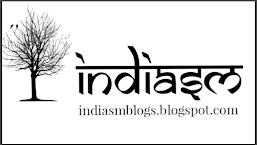Abstract
Sushruta took surgery in medieval India to admirable heights and that era was later regarded as The Golden Age of Surgery in ancient India .Because of his numerous seminal contributions to the science and art of surgery in India, he is regarded as the 'Father of Indian Surgery' and the 'Father of Indian Plastic Surgery
Today, Ayurveda, the traditional system of Indian medicine is becoming the hottest fad around the world. From Turmeric latte which is Haldi with milk, to Moringa, or drumstick leaves, that is dubbed the worlds new wonder drug, everyone is discovering herbal remedies which have been passed through generations for centuries, in India. Scholars had noted the strides made in ancient India, centuries back. Noted 19th-century British Historian James Grant Duff famous for his work ‘History of the Marathas’ observed -
Many of the advances in the sciences that we consider today to have been made in Europe were in fact made in India, centuries ago.
However, these Ayurvedic herbal remedies are just the tip of the proverbial iceberg. The field of medicine was so advanced in India, that ancient Indian medical practitioners composed texts on advanced surgery and the human physiology 2000 years ago! The most prominent of text which has survived is the Sushruta Samahita or ‘Sushruta’s compendium’, believed to have been composed by a Rishi Sushruta.
In ancient India, Ayurveda and medical science were divided into two major traditions, the Atreya School based in Takshashila near Peshawar and the Dhanvantri School based in Benaras. The Atreya school gave more prominence to the practice of medicine and their primary text was the Charaka Samahita while the Dhanvantri school gave greater prominence to surgery and referred to the Sushruta Samhita
Sushruta, one of the earliest surgeons of the recorded history (600 B.C.) is believed to be the first individual to describe plastic surgery. Sushruta who lived nearly 150 years before Hippocrates vividly described the basic principles of plastic surgery in his famous ancient treatise 'Sushruta Samhita'
1,2 in 600 B.C. 'Sushruta Samhita'(Sushruta's compendium) which is one of the oldest treatise dealing with surgery in the world indicates that he was probably the first surgeon to perform plastic surgical operations. This paper presents a historical window into various contributions of Sushruta to plastic surgery and allied fields which were described in 'Sushruta Samhita' more than 2500 years ago.
Dr Frank McDowell, Editor of the Journal Plastic and Reconstructive Surgery in his ‘The Source Book of Plastic Surgery,’ described Sushruta and his work thus -
‘Through all of Sushruta's flowery language, incantations and irrelevancies, there shines the unmistakable picture of a great surgeon. Undaunted by his failures, unimpressed by his successes, he sought the truth unceasingly and passed it on to those who followed. He attacked disease and deformity definitively, with reasoned and logical methods. When the path did not exist, he made one.’
The Sushruta's contribution in the field of Plastic Surgery can be enumerated as follows :
- Rhinoplasty (cheek)
- Classification of mutilated ear lobe defects and techniques for repair of torn ear lobes (15 different types of otoplasties)
- Cheek flap for reconstruction of absent ear lobe.
- Repair of accidental lip injuries and congenital cleft lip.
- Piercing children's ear lobe with a needle or awl.
- Use of suture materials of bark, tendon, hair and silk.
- Needles of bronze or bone (circular, two finger-breadths wide and straight, triangular bodied, three finger - breadths wide)
- Classification of burns into four degrees and explaining the effect of heat stroke, frostbite, and lightening injuries14.
- Fourteen types of bandaging capable of covering almost all the regions of the body and different methods of dressings with various medicaments.
- Use of wine to dull the pain of surgical incisions.
- Described 20 varieties of sharp instruments *(sastra) and 101 types of blunt instruments (yantra) and their handling techniques.
- Systematic dissection of cadavers.
- Advocated the practice of mock operations on inanimate objects such as watermelons, clay plots and reeds.
- Use of leeches to keep wounds free of blood clots.
- A code of ethics for teachers as well as students.
*”should have an edge so fine that it should divide the hairs on the skin.”
The Sushruta's contributions to allied fields are:
- Surgical demonstration of techniques of making incisions, probing, extraction of foreign bodies, alkali and thermal cauterization, tooth extraction, excisions, trocars for draining abscess draining hydrocele and ascitic fluid.
- Besides splinter injuries, Sushrut also deals with trauma. He describes six varieties of accidental injuries encompassing almost all parts of the body:
- Chinna: Complete severance of a part or whole of a limb
- Bhinna: Deep injury to some hollow region by a long piercing object
- Viddha prana: Puncturing a structure without a hollow
- Kshata: Uneven injuries with signs of both chinna and bhinna, i.e.a laceration
- Pichchita: Crushed injury due to a fall or blow
- Ghrsta: Superficial abrasion of the skin
- Described removal of the prostate gland, urethral stricture dilatation, vesiculolithotomy, hernia surgery, caesarian section, management of haemorrhoids, fistulae, laparotomy and management of intestinal obstruction, perforated intestines, accidental perforation of the abdomen with protrusion of omentum.
- Classified details of the six types of dislocations, twelve varieties of fractures and classification of the bones and their reaction to the injuries.
- Principles of fracture management, viz., traction, manipulation, appositions and stabilization including some measures of rehabilitation and fitting of prosthetics.
- Classification of eye diseases (76) with signs, symptoms, prognosis, medical/surgical interventions and cataract surgery.
- Description of method of stitching the intestines by using ant-heads as stitching material.
- First to deal with embryology and sequential development of the structures of the fetus.
- Dissection and study of anatomy of human body.
- Introduction of wine to dull the pain of surgical incisions.
- Enumeration of 1120 illnesses and recommended diagnosis by inspection, palpation and auscultation.
Source
https://www.google.com/amp/s/www.livehistoryindia.com/amp/story/snapshort-histories%252F2017%252F11%252F27%252Fsushruta-samhita-the-ancient-treatise-on-surgery
https://en.m.wikipedia.org/wiki/Sushruta
http://ispub.com/IJPS/4/2/8232






0 Comments
Please post your views